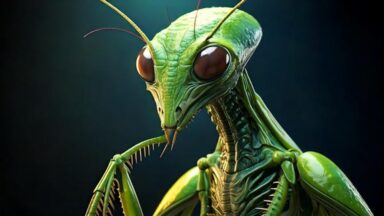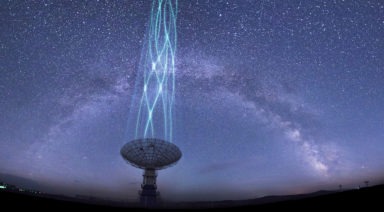Four Creatures of the Unknown That May Actually Exist

BigFoot

What
A legendary ape-man with incredible strength that lives deep in the forest; also known as the Sasquatch or Yeti.
Where
Deep in the woods and remote mountainous regions; usually reported along the Pacific Northwest of America, with sightings reported along the coast, from Northern California to Alaska.
History of Human Interaction
Rumored sightings, grainy photographs, unexplainable footprints; casts have been made of unusual footprints; hair and stool samples have been tested, without conclusive or widely-published results.
Close Relatives
Pongos and Orang Pendecks.
Features
Six to nine-feet tall, heavily built and muscular, with large feet and a sagittal crest on top of the head, giving the head a somewhat pointed, elongated look. The forehead itself is generally sloping. The entire body is covered with thick, shaggy fur. Footprints usually measure 15-inches long, with five toes.
Special Powers or Characteristics
Powerfully psychic, shy and super strong.
Dragons
![]() What
What
Flying reptilian-like creature capable of breathing fire.
Where
All over the world, particularly Asia, Africa and the Americas.
History of Human Interaction
Marco Polo described huge dragon-like serpents in the late 1200s. Explorer Frank Mellard also noted the presence of dragon-like creatures while on expedition in Rhodesia in the early 1900s. Dragons are also found in mythology in many indigenous cultures on the planet; they are revered and celebrated in China.
Close Relatives
Snakes, Komodo dragons and pterodactyls.
Features
Flying reptilian creature with a beak or elongated jaw with razor-sharp teeth, two small feet with three claws each, wings, serpentine skin or scales, and glaring eyes.
Special Powers or Characteristics
Known to fly, have super strength and harness or create fire at will.
Loch Ness Monster

What
Large snake-like creature found in lakes.
Where
Loch Ness, in the Scottish Highlands, which is one of the largest and deepest bodies of water in the UK; similar creatures have been sighted in Vermont and Canada.
History of Human Interaction
Sightings are recorded in the early 1900s but lore and legends depict Nessie much earlier. Jules Verne cites a similar creature in Journey to the Center of the Earth.
Close Relatives
Plesiosaur, a Mesozoic marine reptile believed to have been extinct for 65 million years.
Features
Long and thin with a serpent-like neck; sometimes the head is described as turtle or horse-like; the creature is greenish with black humps.
Special Powers or Characteristics
Shy, with impressive strength.
Giant Squid or Kraken

What
The giant squid or Kraken is a creature of the oceans and may be anywhere from 60-feet to 1.5 miles in diameter.
Where
The giant quid is a creature of the oceans, often retreating to the deepest, unknown canyons of the seas.
History of Human Interaction
Giant squid are found in Scandinavian legends. Also called Architeuthis, the first sightings of the creature were recorded in Denmark in the 1500s; Jules Verne features the Kraken in the novel 20,000 Leagues Under the Sea; the largest scientifically documented squid was 43-feet long and weighed roughly one ton.
Close Relatives
Other sea creatures, notably, the common sea squid.
Features
Long (25-feet or more) and massive; in legends, it takes the shape of a squid or octopus, with eyes the size of saucers; eight or more tentacles; head has a beak with rows of sharp teeth; known to lay eggs, squirt ink and move through the water by jet-propulsion; there may be more than one species of giant squid.
Special Powers or Characteristics
Enormous size and strength; when it descends into the sea, it creates a huge suction vortex, pulling anything within its reach down with it.
Bigfoot Encounters and Other Evidence of the Elusive Cryptid

Whether you consider yourself a believer or not, there are hundreds, if not thousands, of reported Bigfoot encounters, including a few from some widely recognized names. These encounters span cultures and continents and even date back to times of antiquity when natives ruled the land. Today, more than 20 percent of the U.S. population says it believes Bigfoot exists, and there’s plenty of evidence to boot.
Last year, two sightings picked up by trail cameras on Sherman Pass and SR 20 in Snoqualmie, WA caught what appears to be a large bipedal figure trekking through the snow, reigniting passionate debate about the famous cryptid.

 What
What


































